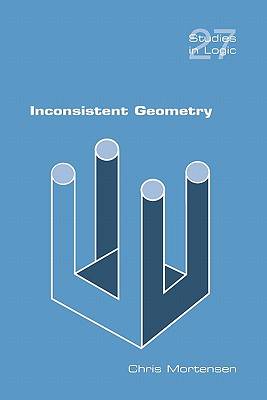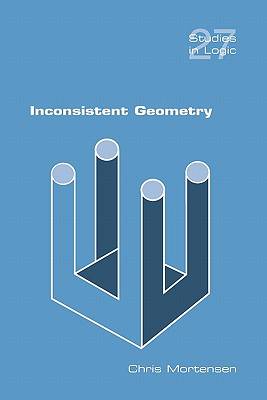
Door een staking bij bpost kan je online bestelling op dit moment iets langer onderweg zijn dan voorzien. Dringend iets nodig? Onze winkels ontvangen jou met open armen!
- Afhalen na 1 uur in een winkel met voorraad
- Gratis thuislevering in België vanaf € 30
- Ruim aanbod met 7 miljoen producten
Door een staking bij bpost kan je online bestelling op dit moment iets langer onderweg zijn dan voorzien. Dringend iets nodig? Onze winkels ontvangen jou met open armen!
- Afhalen na 1 uur in een winkel met voorraad
- Gratis thuislevering in België vanaf € 30
- Ruim aanbod met 7 miljoen producten
Zoeken
Omschrijving
The Theory of Inconsistency has a long lineage, stretching back to Herakleitos, Hegel and Marx. In the late twentieth-century, it was placed on a rigorous footing with the discovery of paraconsistent logic and inconsistent mathematics. Paraconsistent logics, many of which are now known, are "inconsistency tolerant", that is, they lack the rule of Boolean logic that a contradiction implies every proposition. When this constricting rule was seen to be arbitrary, inconsistent mathematical structures were free to be described. This book continues the development of inconsistent mathematics by taking up inconsistent geometry, hitherto largely undeveloped. It has two main goals. First, various geometrical structures are shown to deliver models for paraconsistent logics. Second, the "impossible pictures" of Reutersvaard, Escher, the Penroses and others are addressed. The idea is to derive inconsistent mathematical descriptions of the content of impossible pictures, so as to explain rigorously how they can be impossible and yet classifiable into several basic types. The book will be of interest to logicians, mathematicians, philosophers, psychologists, cognitive scientists, and artists interested in impossible images. It contains a gallery of previously-unseen coloured images, which illustrates the possibilities available in representing impossible geometrical shapes. Chris Mortensen is Emeritus Professor of Philosophy at the University of Adelaide. He is the author of Inconsistent Mathrmatics (Kluwer 1995), and many articles in the Theory of Inconsistency.
Specificaties
Betrokkenen
- Auteur(s):
- Uitgeverij:
Inhoud
- Aantal bladzijden:
- 174
- Taal:
- Engels
- Reeks:
Eigenschappen
- Productcode (EAN):
- 9781848900226
- Verschijningsdatum:
- 15/10/2010
- Uitvoering:
- Paperback
- Formaat:
- Trade paperback (VS)
- Afmetingen:
- 156 mm x 234 mm
- Gewicht:
- 254 g

Alleen bij Standaard Boekhandel
+ 119 punten op je klantenkaart van Standaard Boekhandel
Beoordelingen
We publiceren alleen reviews die voldoen aan de voorwaarden voor reviews. Bekijk onze voorwaarden voor reviews.











